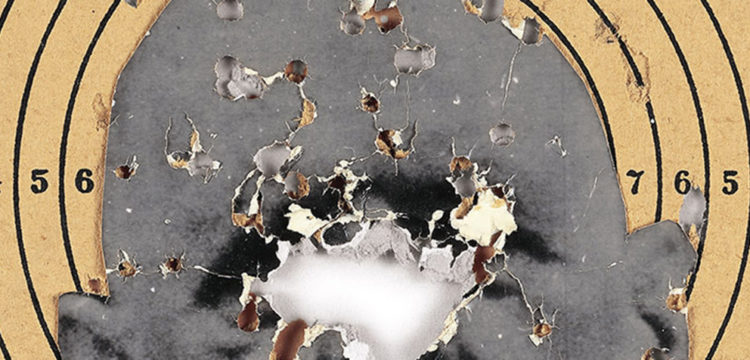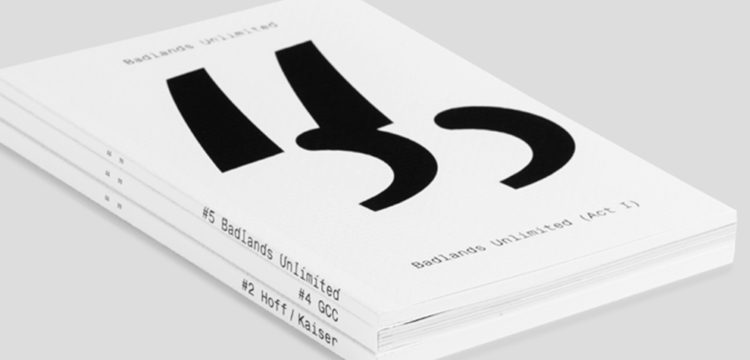Browsing through Dieter Roth’s Diaries
The work of a leading figure in the history of artists’ books told through his handwritten diaries, an expanded mental space for his artistic and poetic research
As part of FLAT 2018, the second edition of the series of exhibitions Le Pagine, curated by Elena Volpato, celebrated Dieter Roth, presenting over one hundred of his books and the entire corpus of his handwritten diaries, to testify to the importance of an oeuvre that continues to represent an inexhaustible source of inspiration for contemporary artists. The text that follows is an excerpt from the introduction of the limited edition exhibition catalogue (FLAT, 2018). The book gathers together all Dieter Roth’s 230 publications and his 46 diaries.
Roth has poured his whole life into countless pages. He kept diaries and notebooks and created more than two hundred books, producing them in every season of his artistic activity, starting in the mid-fifties. Even before that, his training in what was then called ‘commercial art’ had led him to explore in depth the techniques of printing, typographic composition, and character design, as well as lithography and engraving. The compositional rules of a book, its specularity, its symmetrical openness, thanks to the paired pages, its birth through the pressure of inverted characters and the development of reading page after page, acted in Roth’s thinking as a sort of ideal form, that of a mirror able to tell the time.
For Roth, the symmetrical nature of the book reflects the inner rule of the mind, developed around what he called the “axis of symmetry,” understood as the axis of human consciousness. The book is the frame to which to return constantly in order to verify an impossibility and renew a desire. The impossibility and desire to continue to imagine a book-cosmos, which might be at the same time a complete image of the mind and of the world. Roth played with those distant illusions of accomplishment with a mixture of irony and despair. He did it above all in the drafting of Mundunculum, an essay published in 1967, whose title recalls, not by chance, the humanistic dream of a code of creation, capable of understanding everything and reflecting man in the evocative formula of the alchemic homunculus.
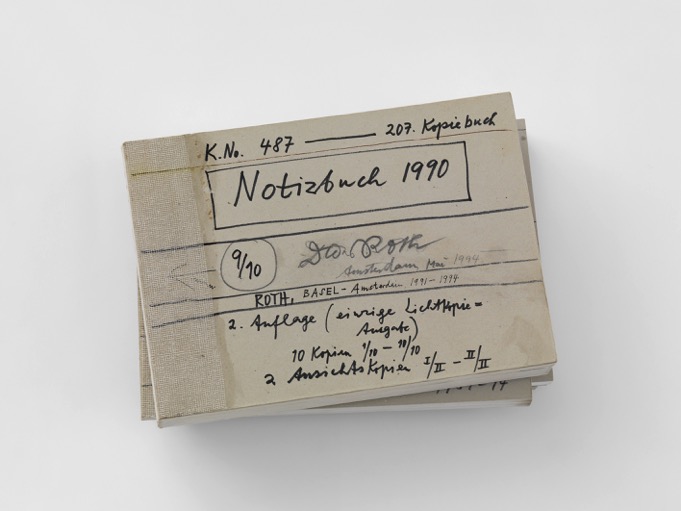
Dieter Roth, Copy Book (No. 487) Notizbuch 1990, published by Dieter Roth Verlag, Basel, Amsterdam, 1991-94. Photo: Stefan Altenburger Photography Zürich © Dieter Roth Estate. Courtesy Hauser & Wirth
“The human being invented symmetry in order to be able to represent what he sees. This very, very old invention has done to human consciousness what has recently been done to the human body by way of science, the atom bomb re possible explosion and the H-bomb re possible implosion, although science merely gives a faint and faded echo of this long-ago fear. The explosive force of the notion of the symmetry axis can be conveyed as follows: alongside each particle of human consciousness, an axis of symmetry can be placed, so that the image reflected from this particle appears on the other side of this symmetry axis. Both parts, image and reflection, form a new particle of consciousness, near which a symmetry can again be placed, and it must be so due to the compelling force of the invention cited above. Thus, on each side of each new symmetry axis, a reflected entity is formed, near which again and again symmetry axes are formed, and so forth, explosively, ad infinitum. The implosive force of the notion of symmetry axis can be perhaps explained as follows: Through the contents of human consciousness, the being posits his symmetry axis, consequently splitting the conscious mind into parts, which again in their middle can take on symmetry axes. Symmetry axes are formed in each new compartment of consciousness, splitting each compartment into new compartments, and so forth, implosively, ad infinitum.”
This is a description that reformulates the loss of the unity of the subject that had emerged in German philosophical thought until the complete crumbling of the humanistic tradition. The proliferation of the axes of symmetry that Roth causes to explode in human consciousness is the offspring of the plurality of Nietzschean psychic nuclei and of the awareness, after his personal experience in the war when he was a child, of the irremediable disarticulation of the whole. Roth uses these assumptions against the most reassuring aspects of Wittgenstein’s thinking, the book’s polemical target, which had suggested the existence of a true correspondence between language and the reality of the external world. With the same mental process with which he depicts the chaotic swarming of centers of consciousness in the single mind, in the same writing Roth denounces our inability to compose a sentence that reflects the real.
The more a sentence seeks to describe with precision, the longer it must be, or in fact: the longer it seeks to be. In order to be able to contain a precise point, it should strive toward an incalculable or inscrutable length. It should tackle the entire world, so as to reach a precise point. It thereby tears up, so to speak, in its interior, and like any location in its interior can be at any time the middle of its interior, one could say here: the sentence that tackles the world, or in other words everything, always tears up in the middle. In the middle between the world’s boundary where visibility ends and the most defined point that it, the above-mentioned sentence, contains, and that one could call the focal point of the being who is saying the sentence, if one wished to humorously describe the human being in optical terminology.
“The sentence thus tears up in the middle. In the middle between everything and nothing, the sentence tears up, which is to say: language tears up. This long, ever-repeated tear, which extends into millions of human beings, over time forms a line that many designate with the word progress. This line, insofar as it refers to a tear in the exact middle, should more simply be called the symmetry axis of human consciousness, as an extension in time.”
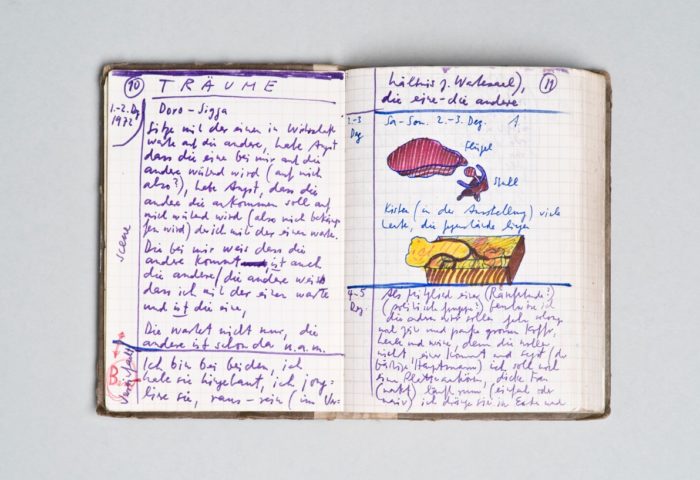
Dieter Roth, Diary, 1975. Photo: Michael Pfisterer. © Dieter Roth Estate. Courtesy Hauser & Wirth
The pages of the diaries, like the books, continued for Roth to be mirrors, but of dispersed fragments, of a real combined with its inexhaustible variations. Countless pages were gathered in his work, one next to the other, but often in a temporary and changeable position, born from the reworking of previous pages and previous books. Every new word, every new image, increased his immense library, but twisted the thought into a vortex of continual rethinking of what came earlier. The idea of copying, the possibility of indefinitely replicating a text, recognizing a generative force for form and speech, was placed at the centre of his production. Just as he cultivated that inner tension of the work, which seeks to overcome the idea of fulfillment in a form of extenuation and disintegration.
In the late seventies, Roth produced some books composed of drawings drawn at speed with both hands. These are mostly self-portraits rendered with symmetrical, curved, and wavy lines: chubby men—self-portraits of himself—with the body in motion and in continuous metamorphosis from one page to another, mixed up and confused with animal figures and ornamental motifs.
A series of photographs portray him sitting at his work table, while making—in 1978—drawings for Trophies, the first book in this series. The raised point of view from which they were taken makes it possible to see the white sheet on which he is drawing in its entirety, with a fold in the middle, similar to the central one of an open book. Roth looks towards the centre from which the drawing of his self-portrait seems to be generated by both coming close and moving away. The symmetry of the gesture and the harmonious movement of the pencils on the paper make the lines drawn a visual bridge between the artist and the work, a form of closure and completion of the thought and the body. Some of the books in the series, such as 13 Brücken, 1981 (13 Bridges, 1981), and Noch mehr Brücken, 1981/82 (Still More Bridges, 1981/82), are actually collections of drawings of bridges, junctions drawn between one hand and another.
In one of the photos, Roth has just finished the hands of the little man, arranged at the top corners of the sheet. Its open and raised arms repeat the arch of Roth’s arms, enclosing his attention in a mirror, recomposing subject and self-representation in a circle. But here, as in much of Roth’s work, what seems to promise a soothing reconstruction of the parts into a whole ends up showing itself as a place of scission and loss of self in images that duplicate it, often multiply it, without really being able to return it.
In the world of representative possibilities that open up on the double blank page of the book and of Roth’s symmetrical drawings, the vertical fold of the sheet constitutes the origin of the visible, but also a blind spot: the axis of an asymptotic design that can neither live in nor depict the centre, since the tips of two pencils cannot occupy it at the same time. The visual origin, that mental space that seems to slip in the seam of the book, is unattainable just like the heart of the artist’s identity that remains unrepresentable in his self-portraits, not unlike the tear in the middle of the phrase discovered by a conscience that, chasing the concreteness of the detail ends up discovering the void and, in that abyss, sees the possibility of uttering it vanish. The centre of the ego does not find an image that can portray it, it cannot find a phrase that can enunciate it, and if there is no image that shows it and there are no words to express it, then there is no way to be certain that the ego exists.
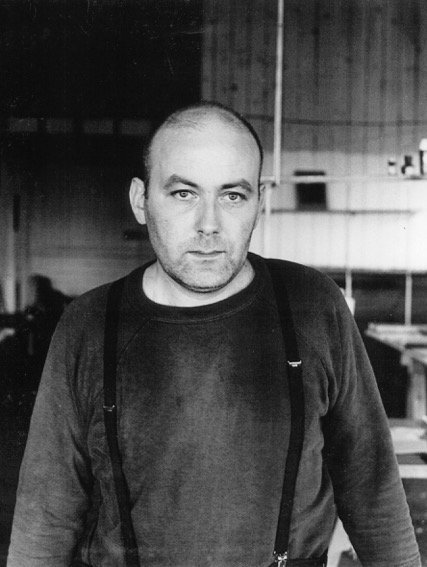
Photo portrait of Dieter Roth. © Dieter Roth Estate. Courtesy Hauser & Wirth
Roth recognized a fundamental difference between word and image. He argued that verbal language could only suggest the author’s inner self, while the image was able to depict both the inner as well as the outer reality through its ability to show, which immediately precedes the possibility of writing, since writing comes out of the pen already combined with the inner flow of thoughts. For this reason, drawing quickly and drawing with both hands had a fundamental significance for Roth: it reduced the time of reflection and annulled the linearity of writing.
From 1970, Alighiero Boetti was developing the possibility of dissolving the tangle of hand and thought through ambidextrous and symmetrical writing, according to the motto: “Writing with the left hand is drawing.” From the image of two hands holding a single pencil, Boetti allowed the representation of the entire world to open up on the paper, but he called the whole that he drew “Tra sé e sé” (“to oneself”), thus bringing it back to the inner nature of the ego. In Roth, the inner world and the outside world share a blind spot in the middle, a blindness that an awareness of the subject cannot overcome; indeed, it does not seem to be a form of consciousness that is not awareness of that void.
Emerging in these quick two-handed drawings, mixed in with the synthesis of the cartoon-like drawing, are singular reminiscences of ornamental Baroque and Rococo motifs. And perhaps it should come as no surprise that precisely the succession of those two styles in the history of art was expression of the first fundamental season of the loss of centre and of the evaporation of an identity put to the test by a new image of the world that crumbled the humanistic exchange between the cosmos and the unity of the self. Roth’s ‘trophies’ evoke the swirling stuccos and gilded frames of seventeenth-century Germany, they feature the same anthropomorphic animals and even the putti that symmetrically frame central emblems, or more often oculi, openings, frames of a looking without object, of an act of seeing that observes itself. Gilt capriccios once framed mirrors placed in front of other mirrors, in the ballrooms of the palaces where spinning dances, scrolls, and curls were lost in the vertigo of a space without coordinates any more. Roth’s infinity, like Baroque infinity, sinks at the centre, engendering by implosion; but Roth’s infinity, like Romantic infinity, is lost in the whirlpool of the elements at the borders of the visible. Two different concerns that marked European culture and are triggered anew in the artist’s work through the twentieth-century disintegration of the ego.



